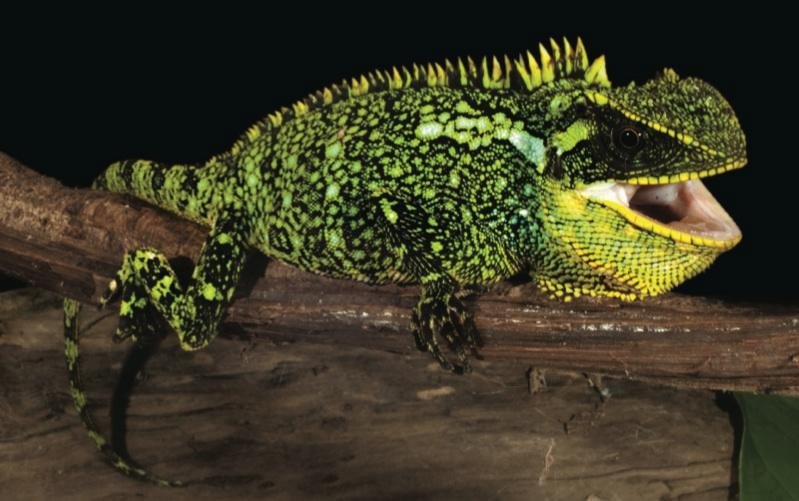Ecuador, Peru – Researchers in Ecuador and Peru have discovered three new species of dragon-like wood lizards. The three, going by the names Enyalioides anisolepis, Enyalioides sophiarothschildae, and Enyalioides altotambo were discovered among the Andean cloud forests of South America’s mountain range in a one-million-square-kilometer area. It remains a mystery of how the spiky lizards […]
Ecuador, Peru – Researchers in Ecuador and Peru have discovered three new species of dragon-like wood lizards. The three, going by the names Enyalioides anisolepis, Enyalioides sophiarothschildae, and Enyalioides altotambo were discovered among the Andean cloud forests of South America’s mountain range in a one-million-square-kilometer area.
It remains a mystery of how the spiky lizards in Peru and Ecuador had not been discovered bearing in mind that they are rated as some of the biggest and most colorful lizards living in that region and Amazon rainforest. Researchers gladly concluded that the species of this woodlizards were certainly new after thorough examination and DNA of several specimens.
This is, in addition, to cross-referencing of the samples while comparing them to samples from other country’s history museums. With the number of woodlizard species having doubled during the past couple of years to get to 15, scientists consider this discovery that was made in cloud forests as accidental.
In 2006, only a few of the dwarf dragon species were noticeable and were commonly known as Herpetologists. However, for the past seven years seven new dwarf dragons species have been found by Torres-Carvajal and his colleagues in Ecuador and Peru. The dwarf dragons were easy to find on their last trip.
From three species of woodlizards, Enyalioides altotambo was discovered first, Enyalioides anisolepis second and finally the Enyalioides sophiarothschildae that is described as an aggressive lizard though it has a slender body
The woodlizards also referred to as “dwarf dragons” prefer humid environment. They are highly patterned on their skins with exploring eyes and rows of spike-like scales. They grow within the range of 3 to 6 inches with their bright colors of brilliant neon green and blood red coupled with their patterns serving as camouflage.
In reference to their coloration of and the arrangement of their scales, the three newly discovered woodlizard species could be classified as unique from their relatives since their DNA also differs.


Leave a Reply